Knödel
‘Knödel’ are German Bread and Bacon Dumplings.
They are tender, savory, and incredibly delicious and make a perfect and filling side dish.
Dumplings are one of my personal German food favorites. To me, Knödel are forever associated with ‘having Sunday dinner at Oma Herta’s house. She was the queen of making these rich, delicious dumplings.
Knodel are perfectly served as a side dish with Sauerbraten, Schnitzel, or Goulasch (Hungarian-style goulash). And if you want to make the meal even more special, add plenty of gravy and a side of red cabbage (Rotkohl).
Most of the time, Oma would end the meal with a side of Kirschstreusel (Cherry Crumb Cake) or Käsekuchen (German Cheesecake). We quickly learned to skip breakfast whenever we knew she’d make her homemade dumplings.
Ingredient Notes
Please check the recipe card below for a detailed, printable ingredient list.
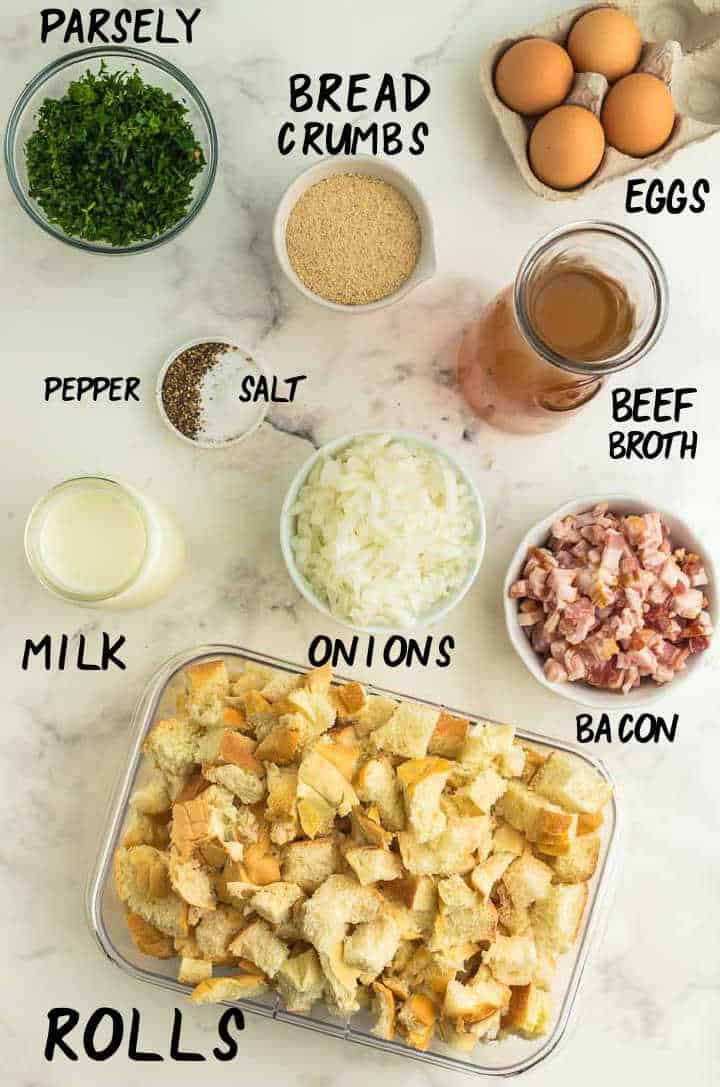
BREAD ROLLS – You can use any white bread, but I prefer to use Kaiser rolls as they come closest to the German rolls.
BACON – Choose any bacon you like; I’ve almost exclusively used thick-cut bacon in recent years. At the same time, there are many great bacon brands out there. This brand of bacon tastes most like home.
But it can be hard to find, so don’t sweat it too much. I’ve even made Knodel with Pancetta in the past. Like our grandmothers weren’t that picky, why should we be, right?
ONION – One large yellow or sweet onion will work, or you can use two small onions.
MILK – I’ve made this with whole milk and 2% milk. You could even use skim milk, but I’ve never tried it. I’ve also never tried non-dairy options. Growing up, this wasn’t a thing, so I can’t speak to it. If I were to try, I’d probably opt for oat milk.
EGGS – The eggs bind the dough. Take the eggs out of the fridge before you start making the dough. This will give them a chance to rise to room temperature.
BUTTER – If possible, use unsalted butter.
BREAD CRUMBS – For this recipe, we need plain bread crumbs. Now, I come from a world where Oma had this meat grinder she used to make her bread crumbs. And that was lovely, but it was a different time and place.
I buy mine in the supermarket. Throw them into the blender and blitz them several times to make them extra fine. I feel they tend to be too coarse, and I like finer.
BEEF BROTH – Of course, you can make your own. Choose a low-sodium beef broth if you are buying the broth in a supermarket.
Variations
NUTMEG – Add ½ to 1 teaspoon of nutmeg to the dough. Nutmeg is an incredibly popular German spice. And you’ll find it in anything from cookies to other side dishes like Spätzle. Oma didn’t use it in her recipe, but it’s often used in other German dumpling recipes. So feel free to experiment.
How To Make Knödel
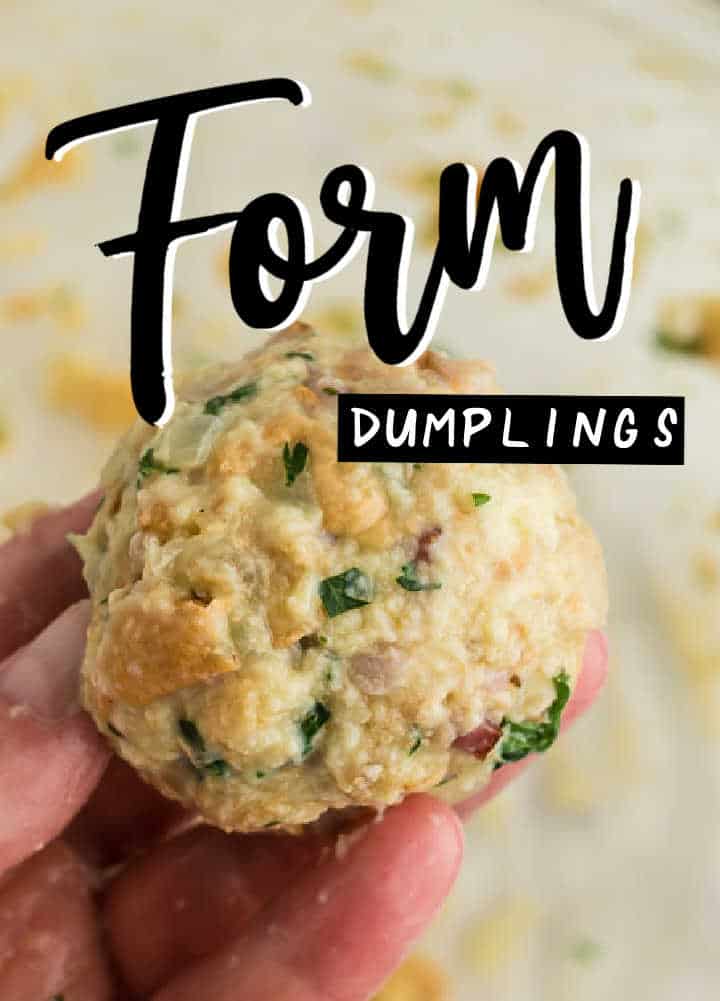

- BREAD: Cut stale bread rolls into cubes and put them into a large mixing bowl.
- ONIONS + BACON: Sauté bacon and onions in a large skillet. Set aside and allow to cool to room temperature.
- MILK: Use a medium saucepan to heat the milk. Don’t bring it to a boil.
- MELTED BUTTER: Melt butter in a small saucepan and add parsley, salt, and pepper.
- DOUGH: In a large bowl, combine bread cubes, bacon and onions, seasoned melted butter, warm milk, and eggs. Use a wooden spoon and combine it into a dough.
TIP: The consistency of the dough should be sticky. If the dough is too runny, add bread crumbs (or flour).
- REST: Allow the dough to rest for 15 minutes.
- SHAPE – Wet your hands to make sure the dumplings don’t stick when you shape them. Shape the dumplings into a ball that’s a little smaller than a baseball.
- COOK: Use a large pot (5 quarts) and bring the beef broth and water to a simmer. Make sure that the water is hot but not boiling. Use a slotted spoon to place the dumplings into the simmering beef water. Cook until the dumplings rise to the top. About 15-20 minutes.
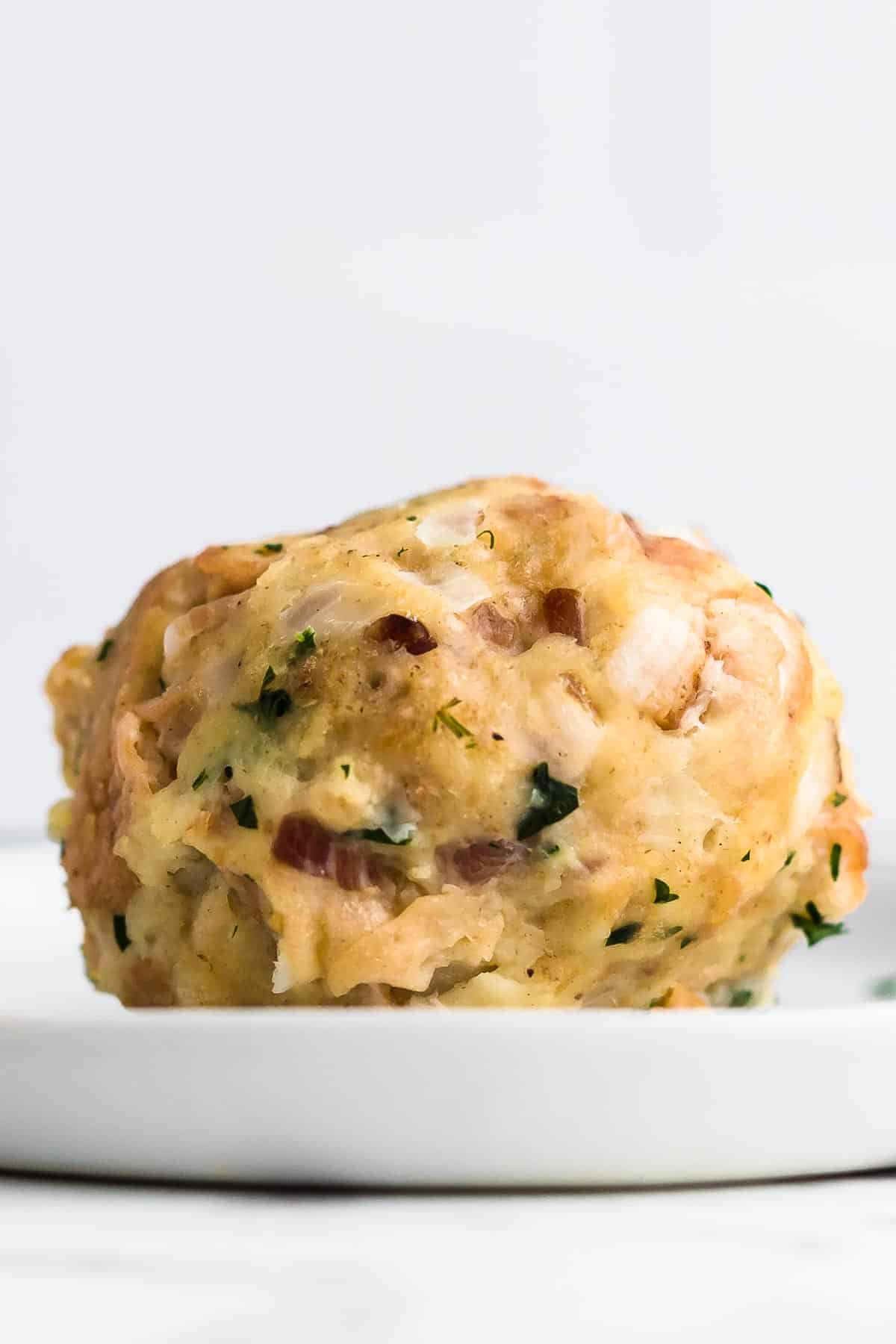
Leftovers
Knödel will last about 3-4 days in the fridge. Store in an airtight container like this one.
Freezing them works well, too. Follow the recipe. Once cooked, place the cooked dumplings onto a baking sheet and allow them to cool completely.
Transfer the baking sheet to the freezer. Freeze for 1-2 hours. Once frozen, put the frozen dumplings into a ziplock freezer bag.
More German Recipes
Recipe Tips and Tricks
STALE BREAD – If your bread isn’t quite stale, place the bread cubes into an oven. Set the oven temperature to 300º Fahrenheit and heat up for 8-10 minutes.
CONSISTENCY – If your dough is too dry, add more warm milk. If it is too runny, add more bread crumbs. The consistency should be sticky but easy to mold.
SHAPING THE DUMPLINGS – Make sure to keep your hands wet while you shape the dumplings.
WATER TEMPERATURE – Make sure the water doesn’t come to a boil while you’re cooking the dumplings. The dumplings will fall apart in boiling water.
SAMPLE DUMPLING – To make sure that your bread dumplings don’t fall apart, prepare a “sample dumpling.” This will allow you to make adjustments to the dough.
Unofficial German Dumpling Dictionary
German recipes can vary a lot from region to region. And so can terminology.
KNÖDEL (plural Knödeln) is one of the German words that’s a bit more challenging to pronounce for English speakers (my husband acts as an independent tester ;-). ‘Kn-oee-dell’. It refers to a bread-based German dumpling.
SEMMELKNÖDEL – German is the language of compound words! Semmelknödel is another term that’s used to describe a bread dumpling. Semmel is a German term for the bread roll. And Knödel, we already know, means dumpling. So put the two words together and get a ‘Semmelknödel.’ However, you would generally think of this as a dumpling without bacon.
SPECKKNÖDEL – Another compound word is the word that describes a knödel with bacon. Speck is German for Bacon.
KLOSS – The words Kloss (plural Klösse) and Knödel are often used interchangeably. And it’ll vary from region to region and family to family. However, in my thinking, the word Kloss refers to a potato dumpling and Knödel to a bread dumpling.
This recipe is a very popular side dish in southern Germany, but also in Austria.
My Mom and part of her family came from Vienna, Austria. And so, growing up, I was lucky also to enjoy Austrian dishes such as my Oma’s Apple Pancake or her famous ‘Kaiserschmarrn‘.

More Easy And Delicious Side Dishes
Chopped German Tomato Salad – Easy side salad.
Candied Sweet Potatoes – Perfect for the holidays.
Bacon Rolls – Stuffing rolled in bacon!
Spätzle – Delicious German Egg Noodles
Knödel – German Bread Dumplings
Instructions
Prep
- BREAD: Cut stale bread rolls into cubes and add to a large mixing bowl.
- ONIONS + BACON: Sauté bacon and onions in a large skillet.
- MILK: Use a medium saucepan to heat the milk. Don't boil! Set aside.
- MELTED BUTTER: Melt butter and add parsley, salt, and pepper.
Making The Dumpling Dough
- In a large bowl combine the bread, bacon and onions, seasoned melted butter, warm milk, and eggs. Use a wooden spoon and combine into a dough. TIP: The consistency of the dough should be sticky. If the dough isn't thick enough, add plain bread crumbs.
- Allow the dough to rest for 15 minutes.
- Wet your hands and shape dumplings. Make them into balls about two inches in diameter.
Boiling The Dumplings
- In a large, wide pot simmer beef broth and water until hot but not boiling. Use a slotted spoon to place the dumplings into the simmering beef water.
- Cook over medium heat until the dumplings rise to the top. About 15-20 minutes.
Equipment
Nutritional Information
Nutritional Disclaimer
Cheerful Cook team members are not trained nutritionists or medical professionals. Calorie information and nutritional values are estimates. If you have nutritional concerns, we recommend using a nutritional calculator.
Maike Corbett is the founder and food blogger of Cheerful Cook, a popular recipe website featuring comfort food recipes from the US and Germany. She has been featured in numerous media outlets, including the AP Wire and MSN.

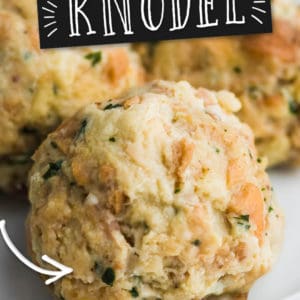
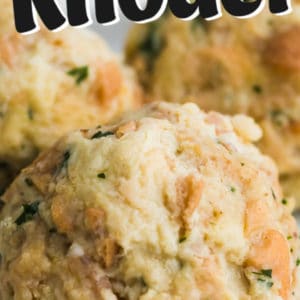


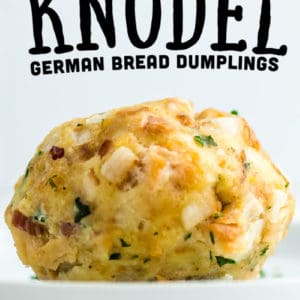
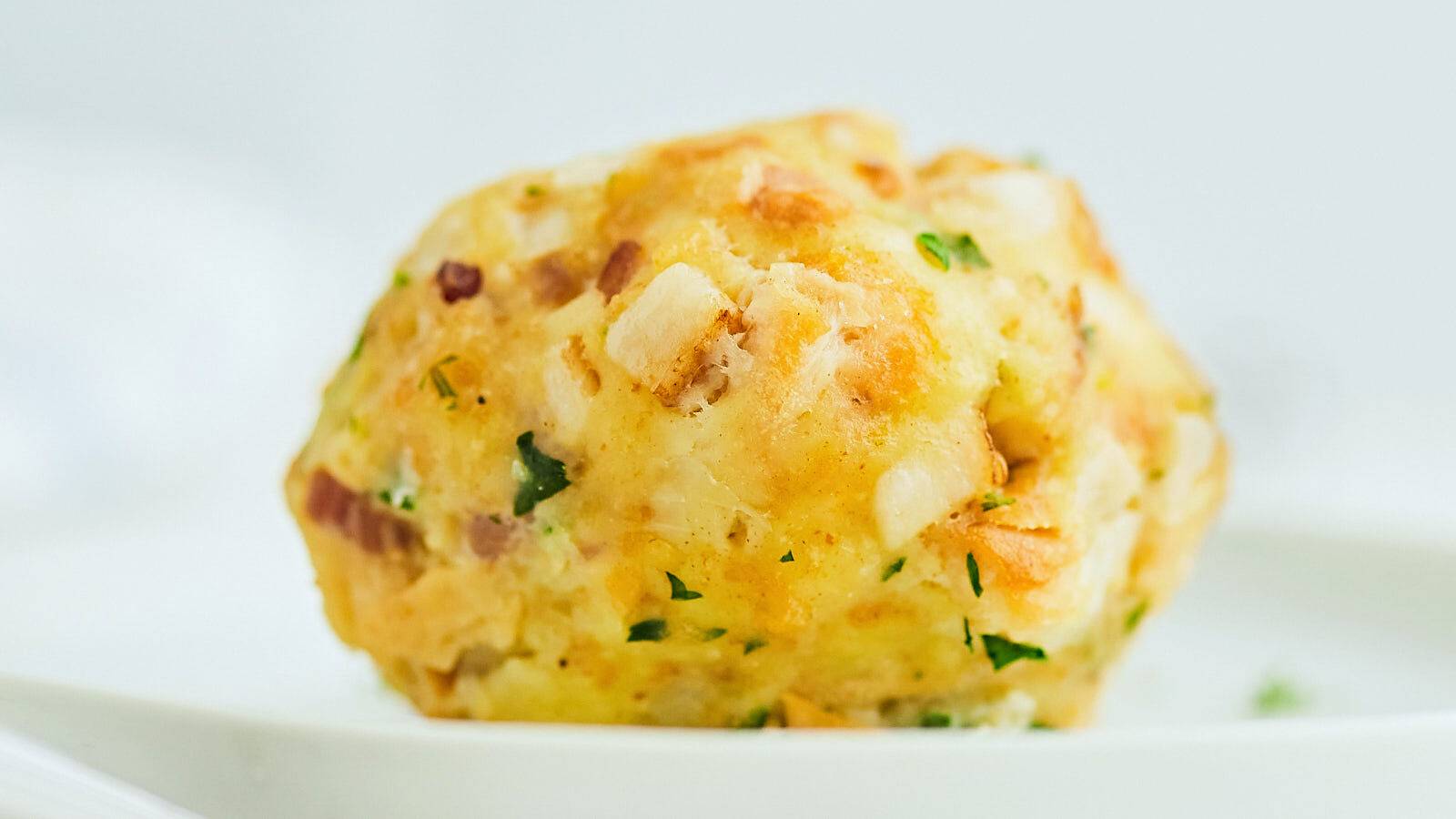
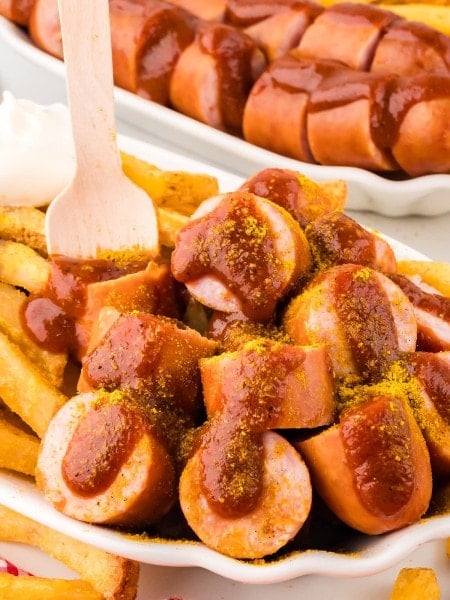
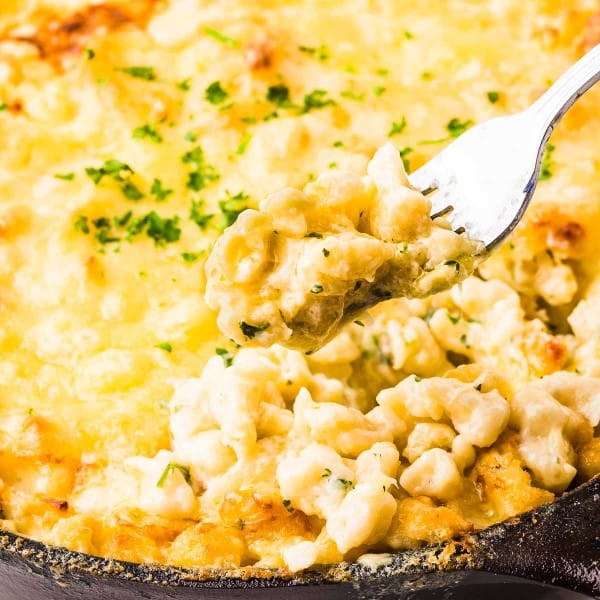
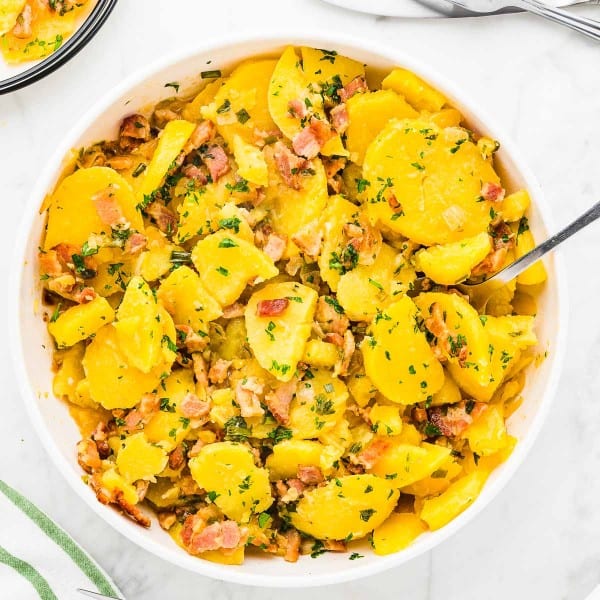

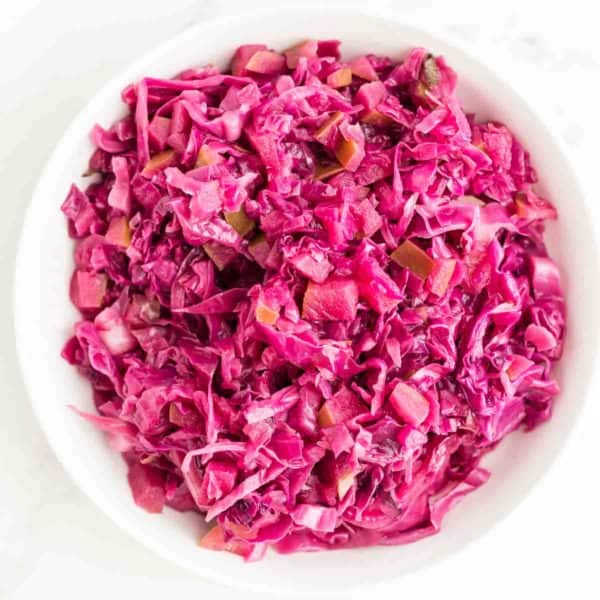
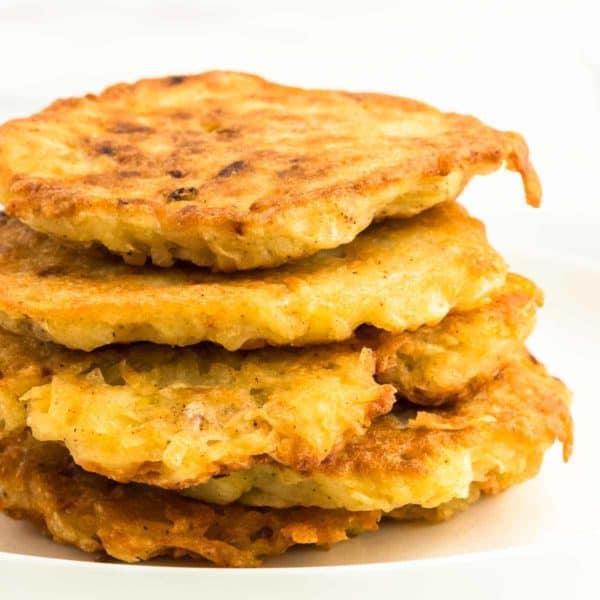
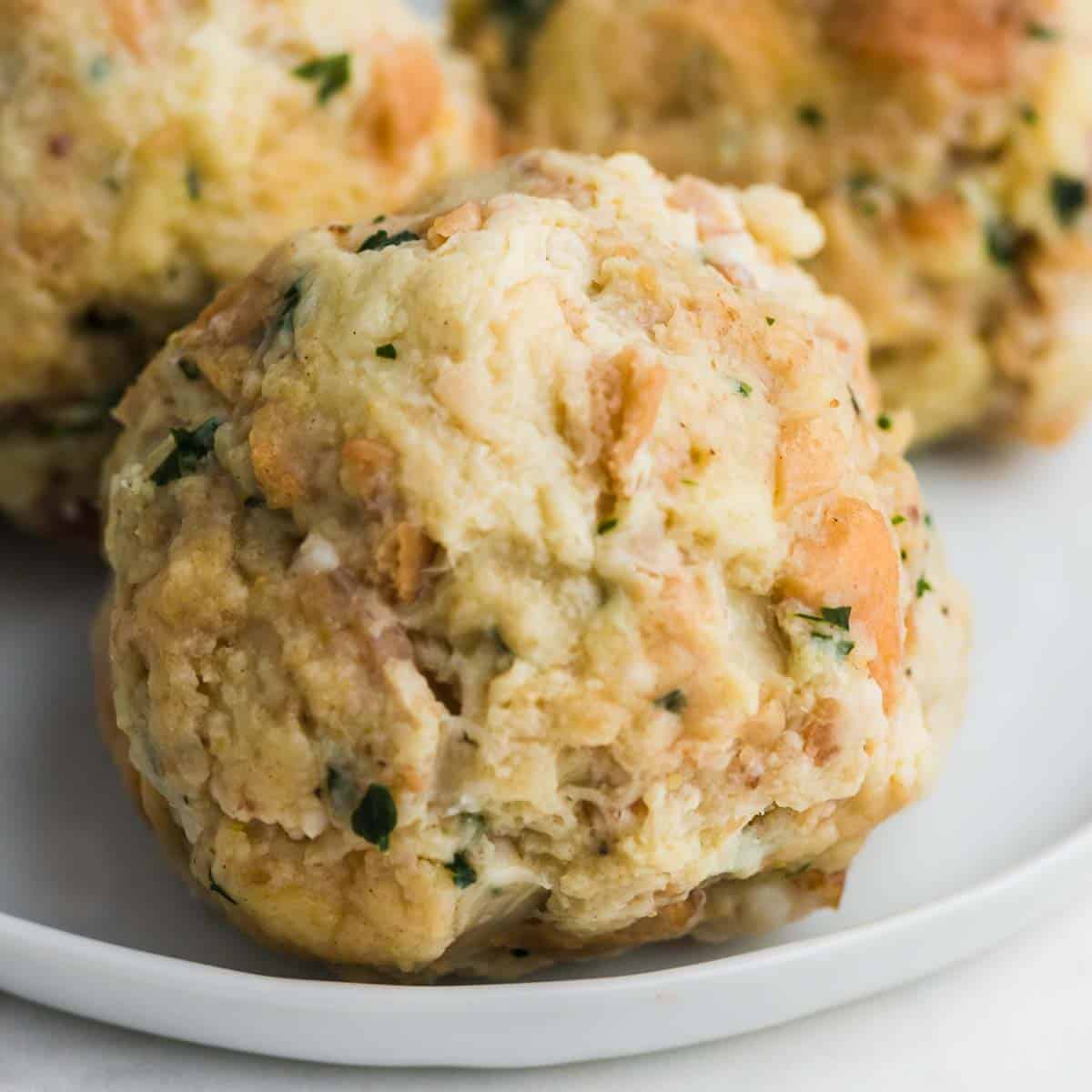
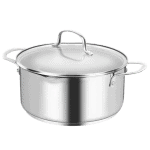
Definitely gave this non cook food for thought. My mom was a great cook. German descent. She made an apple kuche once that has lived in my dreams too long! But until I can find this elusive item, I would like to try some recipes that you have shared. Thank you!
Would like to give this a try for our “Oktoberfest” get together. How do you recommend reheating them?
Hi Anna, that’s a great question. There are two ways to go about it.
Method 1 – Slice the Knödel in half and sauté in butter.
Method 2 – Use a steamer and place it over a pot of boiling water. Place the Knödel in the steamer and allow the steam to gently warm the Knödel.
Added to our goulash tonight to test them out. I probably overcooked my bacon and should have added a little more breadcrumbs to keep them from falling apart during cooking but will try reheating tomorrow for our party… Still delicious!
In a German cooking class many years. ago, I learned to make ‘servietten(?)knoedel which was wonderful. Your recipe sounds just about the same, but I can’t remember exactly. These are individual portions, but could I just make a big one and steam it in a napkin? I recall that the crumbled bacon was sprinkled on the slices. I love German food so very appreciative of your site!
fabulous knodel. reminds me of my oma’s cooking.
My knoedel ALWAYS fall apart! I am desperate to learn this ! My mother made the best ones, large, delicious with gravy!
I learned to cook from my Austrian grandmother. We steam our Knoedel. We add a small dusting of cream of wheat. This produces a fluffy Knoedel.
I am from Nuremberg and we only ever had Potato Dumplings. I definately will try
the bread dumplings. Thank you for the detailed Receipe.
We are doing a “Christmas Around the World” theme & chose Germany as our country this year. I’ve been tasked with making Knodel for our dinner. The recipe says it is for 8 servings…how many Knodel is that per person? We are having 16 people & were thinking 2 each person. Would I double this recipe or triple? Thank you!
Great question! This recipe makes about 8 bacon dumplings total, so that’s roughly one per person. Since you’re serving 16 people and planning on two dumplings each, go ahead and triple the recipe. That will give you 24 dumplings, which is the perfect amount with a little extra wiggle room.
Your recipe sounds interesting and very different. My parents both came to America in the 1920s from Germany. I have eaten Knödel my whole life and still make them to this day, using her recipe, which was a recipe from her mother. They were something my mother made regularly. However, she did not put bacon, onions or pepper in them. She used buttermilk, not plain milk. It gives them an extra tang, that makes them very tasty. She also boiled them in plain water, not boullion. Leftovers can sliced up and stirred into scrambled eggs. Absolutely yummy!